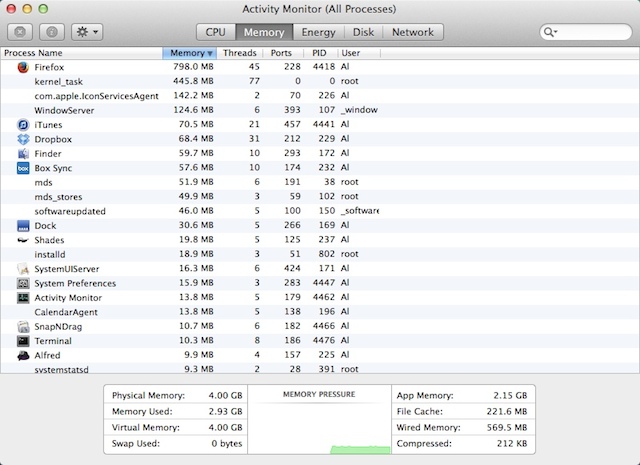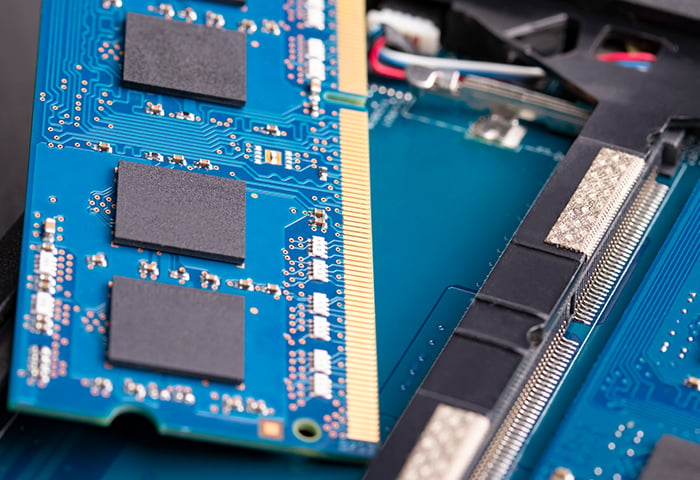To quickly find and safely remove cache files on your Mac, you can use a special software tool: MacCleaner Pro. The app scans your hard drive and automatically finds all the cache files in just a few seconds. Then, all you need to do to remove caches is to select them from the Clean up Mac section and click the Clean Up button. Method 4: Delete Internet Explorer Files to Clear Memory Cache Step 1: First of all, click on the 'Start' button and type 'Internet Explorer' in the text field and press the 'Enter' button. Step 2: Internet Explorer web browser window will appear, you have to click on the 'General' tab at the top of the window.
'I have a MacBook, and recently my MacBook become slower and slower. One of my friends suggests me to clear cache data. To be honest, I am not tech savvy, and I don’t know how to clear cache on Mac at all. Please help!'
Like Windows computer, Mac also has cache and temporary files.
Cache and temporary files on your Mac helps you open some browsing pages quickly.
Surely, it records your trace and takes up some storage.
If you want to free up space, or want your browsing history to be secret, clearing Mac cache and temporary files is necessary.
How to clear cache on Mac?
This page shows the full guide to help you delete cache and temporary files on MacBook Air/Pro, iMac, iMac Pro, MacBook, including app cache, browsing cache (Firefox, Chrome, etc.) and system cache.
Part 1: Easiest way to clear all cache throughly on Mac
If you are seeking for an automatic and quick way to clear Mac caches, then you need the third-party tool, Mac Cleaner, to help you.
It has the capacity to remove junk files, unneeded files, large photos and other useless documents on Mac in one click, which is more efficient than other methods.
4,000,000+ Downloads
Scan entire hard drives to display all junk files and other data for previewing.
Detect junk files, unneeded files, large and old files, duplicate files and uninstall apps.

Monitor battery status, memory usage, CPU usage and disk utilization.
Work for iMac, iMac Pro, MacBook, MacBook Air/Pro, Mac mini, etc.
Step 1. Download Mac Cleaner
Download the latest version of Mac Cleaner and follow the onscreen assistant to install it on your Mac.
When you want to clear cache on Mac, launch the application, it will scan entire hard drive and show you the status of your Mac automatically.
Step 2. Select data for clearing
Go to the 'Junk Files' tab from left hand column, then locate to the right side, and click on the 'Scan' button at bottom right corner to scan all cache data and logs quickly. When you are presented the result, click the 'Review' button to see the details.
Step 3. Clear cache on Mac
Select the data category that you want to remove, the junk files and cache data will show up. Unfold the 'Sort by' dropdown menu and arrange the cache files by name, time and more. Then you can check the boxes in front of worthless files and cache data in each category.

For example, to clear browser cache on Mac for Safari, find the folder title contains Safari and select it.
Finally, click the 'Clean' button at bottom right side, then hit 'Clean' again on the popup dialog to confirm it and trigger the process. When it is done, you can further free up storage by cleaning unneeded and large files.
Part 2. How to clear browsing cache (Firefox/Chrome/Safari) on Mac
When you surf the Internet, your browser will create cache files for you. Here we only take the three frequently used browsers, as the example to show how to delete cache on Mac.
How to clear browser cache on Mac Safari
Step 1: Open the Safari app on Mac. If you cannot find the Develop menu, go to the 'Safari' menu at upper left corner, head to 'Preferences' > 'Advanced', locate to the bottom and tick the checkbox next to 'Show Develop menu in menu bar'.

Step 2: Then back to Safari window, the Develop menu should show up on top ribbon. Pull down the “Develop” menu and choose 'Empty Caches'. Wait for a few seconds until clearing browser cache on Mac is complete.
Step 3: To further clear browsing data in Safari, you can go to the History menu, select 'Clear History'. Choose 'all history' from the dropdown menu and then hit 'Clear History' button to get rid of browsing data on Safari.
if you are running an iPhone, just learn here to clear iPhone browsing history here.
No matter wipe Mac or remove browsing data, there is no notification or confirming message telling you that Safari browser cache data has been cleared. It simply works behind the scenes.
How to clear browser cache on Mac Chrome
Step 1: If you prefer to use Google Chrome on Mac, you have to clear browser cache on Mac in your Chrome browser. Start the Chrome for Mac app, type chrome://settings/clearBrowserData into the address bar and hit the 'Enter' key to go to the clear browsing data window. Or you can click the menu button at top right side with a three-dot icon and head to 'More tools' > 'Clear browsing data” to open it.
Step 2: Make sure to check the boxes in front of 'Cached images and files', 'Browsing history', 'Download history' and other data you want to clear, and then click the 'Clear browsing data' button to clear browser cache on Mac.
It may take a while to complete the process depending on how much cache and browsing data in your browser. And you can set up to clear cache on Mac automatically: pull down the menu icon, go to 'Settings' > 'Show Advanced Settings' > 'Privacy' > 'Content Settings' > 'Cookies' and select 'Keep local data only until you quit your browser'.
How to clear search history on Mac Firefox
Step 1: Open the Firefox for Mac app, pull down the menu button at top right corner of the window marked with a three-line icon. Choose 'Options' to open the options page for Firefox. Then go to the 'Privacy & Security' tab from left side column. Or input about:preferences#privacy into the address bar to open it directly.
Step 2: Scroll down on the right page until you see the 'Cached Web Content' section, then click the 'Clear Now' button to clear browser cache on Mac.
Step 3: To clear search history on Mac in the Firefox browser, locate to the History section on the Privacy page, click the link labeled Clear Recent History to open the floating dialog. The keyboard shortcut is Ctrl+Shift+Del.
Step 4: Finally, hit the Clear Now button to initiate clearing search history on Mac in Firefox. To set up automatic clear history on exit, navigate to the History section in 'Privacy & Security' tab and tick the checkbox next to 'Clear history' when Firefox closes.
Part 3. How to clear app cache on Mac
Mac also shows you the solutions to clear cache on Mac
Step 1: Exit all apps on your MacBook and open the Finder app. Then hold down the 'Shift' key in Sierra or 'Option/Alt' key in earlier versions and unfold the 'Go' menu.
Step 2: Scroll down and find the 'Library' option, click on it to open your Library folder. Then search for the folder called “Caches” and open it, which saves most caches and temporary files generated by Mac apps.
Step 3: Press 'Cmd + A' to select all caches, you can also hold 'Cmd' and select specific app caches. Right click on the selected cache files and choose 'Move to Trash' to throw them to your trash can.
Step 4: Finally, empty the Trash on Mac as usual to clear cache on Mac.
The caches folder contains many files and folders with nonsensical names, such as com.app.itunes. To find the cache file for certain app, you have to look for the folder that matches the app’s name. For example, the file named com.apple. iTunes would include the iTunes caches. Plus, the app cache file does not have UI, so you cannot open it without third party tools.
Part 4. How to clear system and DNS caches on Mac
The Mac system also creates cache and temporary files, but you’d better not interfere with system level cache files and folders. That may lead to in various sorts of unexpected results or even damage your device. To clear system cache on Mac safely, follow the steps below.
Step 1: Go to the Apple menu on your desktop, and choose 'Restart'. This will trigger specific system maintenance tasks that clear caches on Mac for system level automatically. The caches cleared include virtual memory, system temporary files, completed software updates, caches of App Store and more.
Accidentally clear system files? Get system recovery here.

Step 2: After your MacBook startup, you can clear DNS caches on Mac manually. Input terminal into Spotlight to open Terminal, and then type the command below into Terminal:
'sudo dscacheutil -flushcache;sudo killall -HUP mDNSResponder;say cache flushed'
Step 3: Enter your admin password to perform the command and remove DNS caches from your Mac computer.
You may need: How to clear cache on iPad?
Conclusion
In this tutorial, we have told you how to clear cache on MacBook Air/Pro and other Mac computers. You can manually clear cache from system, app data and browsing history. Moreover, we also show the easiest way to clear all cache and temporary files on Mac with Mac Cleaner throughly. No matter which way you use, you should take care of the operation.
It’s no secret that you can free up a lot of space on a Mac® hard drive simply by clearing the cache.
In fact, I managed to clear an enormous 9.73 GB of cache and cookies on my Mac just before I wrote this post.
The best part? You don’t have to be a computer guru to do the same. All it really takes is a few clicks to drastically optimize the hard drive.
It’s worth your time to dig a little bit deeper into why and when we need the cache—and when it’s time to get rid of it.
In this post, we’ll tell exactly what you need to know about this technology and provide a step-by-step guide on how to clear cache.
To get started, I want to show you how cache actually works, and why you should start optimizing it immediately.
What Is Cache and Why Do We Need It?
Simply speaking, cache is a collection of data that duplicates the original information you processed on your computer. Whenever you use any application, your Mac will store some sort of data in order to (potentially) request it faster in the future. As an example, these could be temporary files (such as images and HTML documents) created by a web browser or instant messenger (including Facebook, Twitter, Instagram and Skype).
If a user edits a lot of photos and videos, he may notice that the editor also saves temporary data on the hard disk. Video editors with the function of displaying applied effects during editing don’t always delete such files at the end of work—and the hard drive starts to explode in size.
Besides the obvious desire to clean up disk space, there may be other reasons for deleting caches, including:
- Correcting problems with webpages that load obsolete data.
- Deleting personal data stored on websites and applications.
- Forcing the deletion of obsolete cached information in the application.
If you need to clear all cache files with just one click, download a free trial of Parallels® Toolbox Disk and System Pack. The software will evaluate your log files, cache, trash, browser data, mail cache, mobile apps, and updates—and instantly delete them per your request.
If you want to do that manually, follow the steps below.
How to Clear System Cache in macOS
Step 1: Terminate all running applications using the Cmd+Q key combination.

Step 2: Open a Finder window and use Shift+Cmd+G to navigate to the directory
~/Library/Caches.
Step 3: Manually open every folder, select all the files using Cmd+A, and move everything to the Trash. If required, enter your password.
Note: It’s not advisable to delete cache folders. Keep them to avoid any system conflicts and only delete the files inside.
Step 4: Once again, using the Shift+Cmd+G key combination, now go to the folder
/Library/Caches.
Step 5: Do the same thing—manually delete all files inside each folder there.
Step 6: Reboot. The first time the system boots may take a little longer than usual. This is normal.
If there are multiples user accounts in the system, you have to repeat the same steps for each of them.
How to Clear Cache in Safari
By default, Safari doesn’t provide the functionality to clear cache. But we found a workaround.
In order to open a hidden feature, you have to pretend to be a developer. And voila! It works like magic.
Step 1: From the browser menu, select Safari -> Preferences -> Advanced.
Step 2: Enable the “Show Develop menu in menu bar” option and close the preferences window.
Step 3: From the browser menu, select Develop -> Empty caches.
Step 4: All the caches are successfully cleared. Unfortunately, there isn’t any added functionality to choose what exactly to delete, but your browsing history will remain untouched.
Now you can refresh your Safari browser using Command+R shortcut.
How to Clear Cache in Google Chrome
To delete all the cached images and files in Chrome, navigate to “Clear browsing data” in Settings and clear the data.
Step 1: In the Chrome window, click Chrome -> Clear Browsing data in the top left corner.
Hint: Alternatively, use a default Chrome shortcut, Command+Shift+Delete.
Step 2: In the “Clear browsing data” window, select the “Cached images and files” option. Choose the time range, depending on how much cache you want to eliminate.
Step 3” Click the “Clear data” button to free up the space.
How to Clear Cache in Mozilla Firefox
Clearing the cache in the latest Firefox versions is a relatively easy task. Everything is done within one small window.
Step 1: From the Firefox window main menu, open History > Clear Recent History.
How To Clear Macbook Cache
Step 2: Select only “Cache” and the preferred time range to clear the data.
Step 3: Click “Clear Now” to free up space.
There are advanced settings and add-ons that allow you to clear the cache in Firefox automatically every time when Firefox closes, but that may slow down your experience.
Applications Can Do Everything for You
You can, of course, spend time deleting caches manually, but why waste so much energy if there are applications that do it for you?
Parallels Toolbox is a powerful program that allows you to clear the cache in one click. This tool will remove caches and find other junk files on macOS, such as outdated backups and large files.
Let’s break down the benefits of Parallels Toolbox:
- Add any of the 30+ tools right in the tray menu for easy access.
- It’s fast.
I’ve already mentioned all the time the right tool will save you from the manual tasks. But on top of that, Parallels Toolbox is one of the fastest and most reliable software currently presented in its market niche.
- Get automatic notifications.
4. Delete large files.
The Clean Drive tool allows you to find and delete large applications and files that you may not be aware of.
- Free up unused RAM memory—plus 30+ other perfectly designed tools.
How To Clear RAM On Mac And Reduce Memory Usage
With Parallels Toolbox you can download your favorite online clips from Youtube and Facebook, make a gif, record a video of your screen, enjoy productivity apps and so much more!
